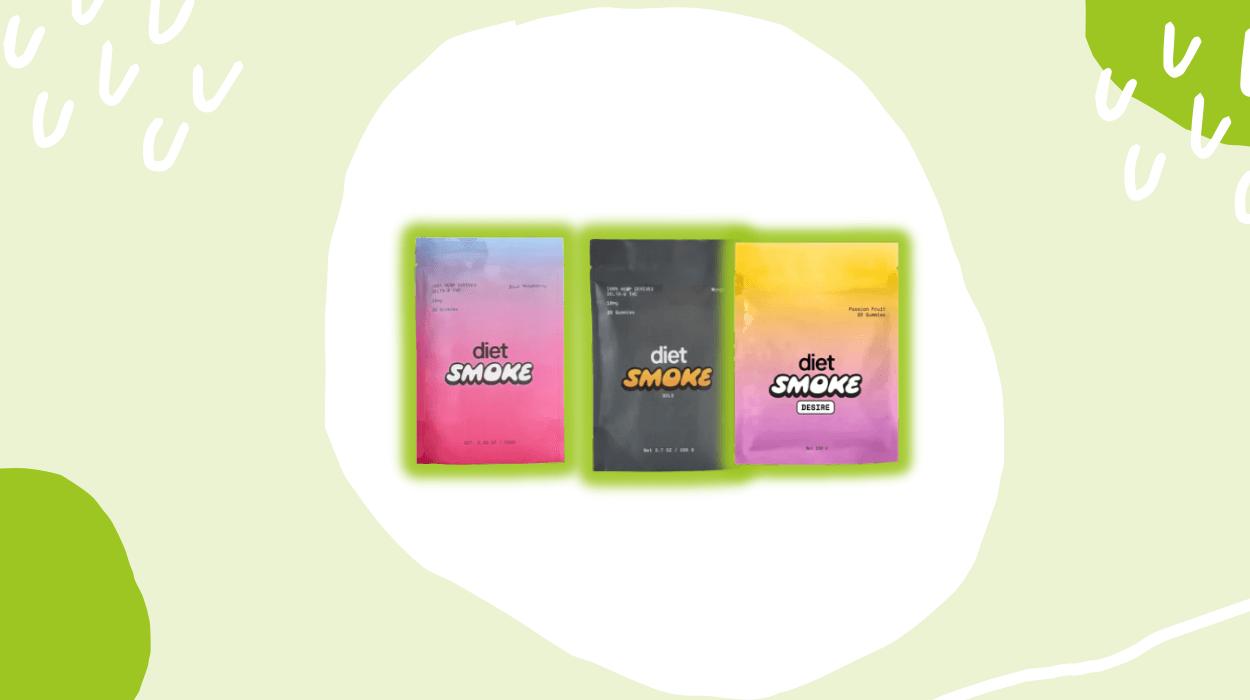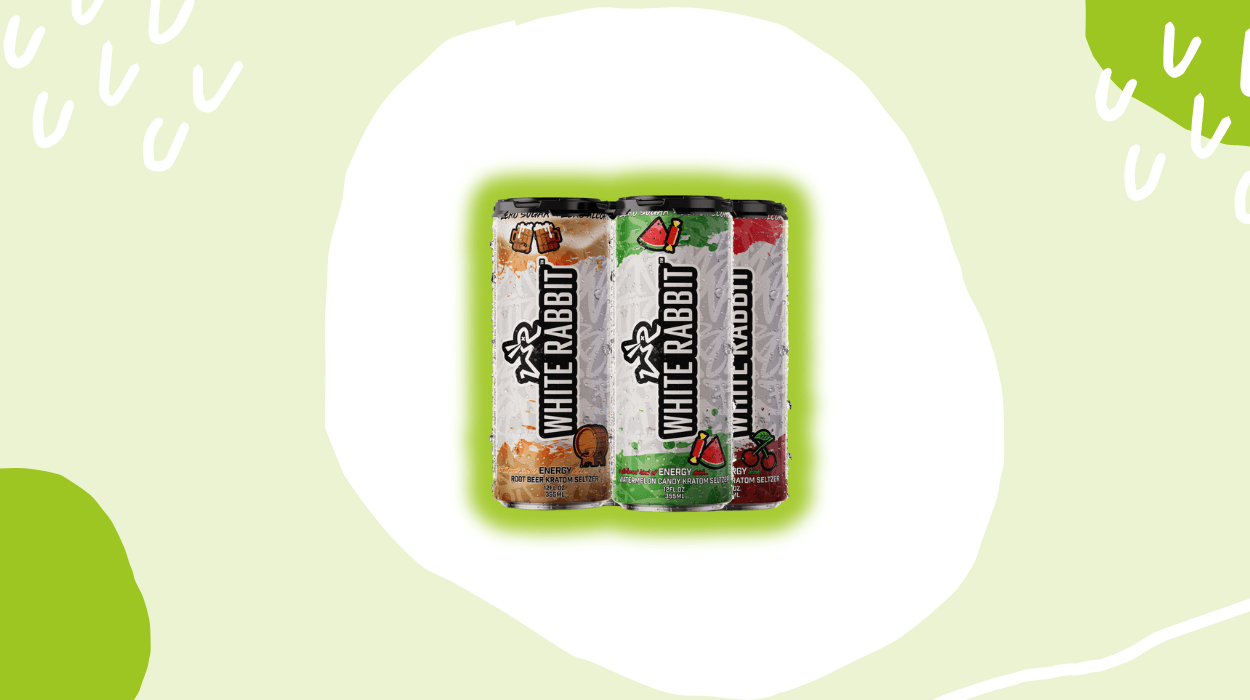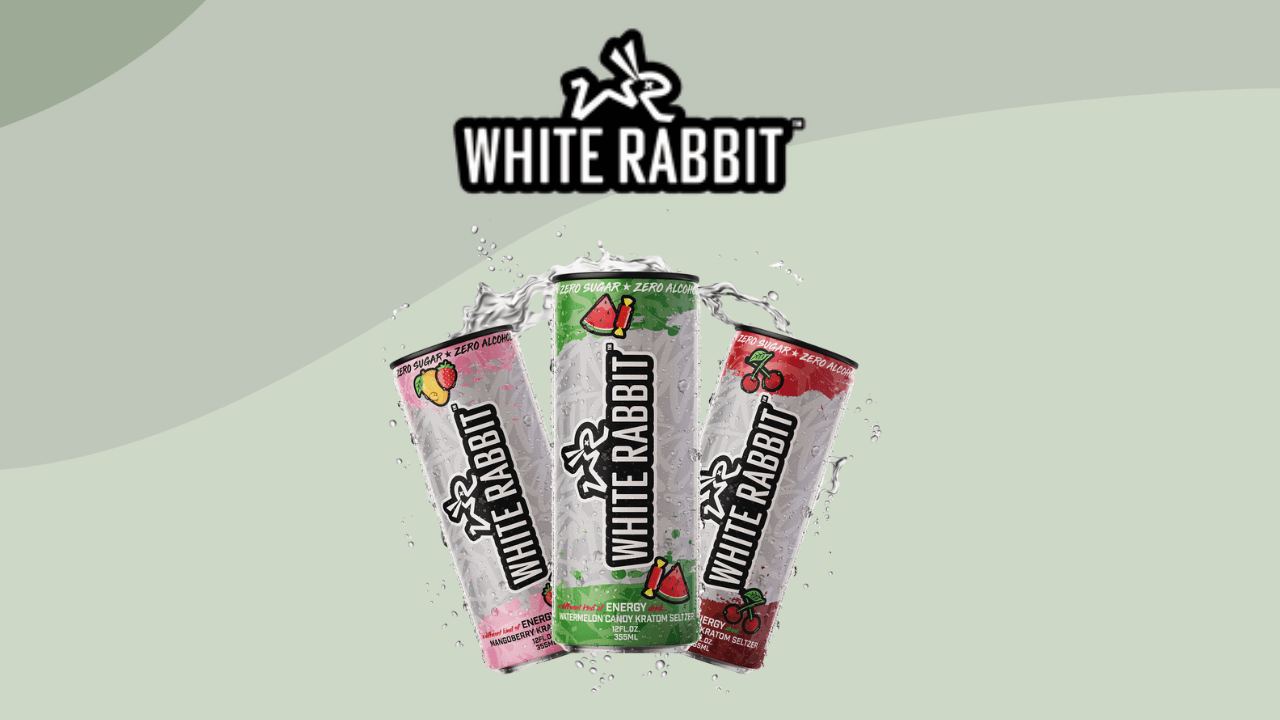

White Rabbit offers a distinctive approach to energy drinks by infusing its seltzers with kratom, a botanical known for its natural stimulant properties.
Its product lineup includes a variety of flavors to provide a balanced and sustained energy support without the jitters or crashes.
The brand claims that its products are free from caffeine and sugar, offering a clear-headed energy lift while aligning with various consumption preferences.
This review examines White Rabbit's offerings, highlighting its flavors, while also exploring the brand's advantages and limitations. We will also compare the brand with similar options to provide a balanced perspective.
White Rabbit is a modern drink brand that focuses on functional drinks that may provide better energy and focus. The brand uses kratom (Mitragyna Speciosa) extract in its offerings, with each energy drink containing 25mg of Mitragynine, the main active alkaloid present in kratom.
As per the official website, this ingredient in the brand's energy drinks is sourced from the tropical Southeast Asian plant and is known for its mild psychoactive effects, allowing its products to offer a natural boost.
The brand's offerings are organized into several categories, such as Kratom Energy Drinks, Kratom Social Teas, merchandise, and wholesale options. Its energy drinks come in a variety of flavors, including mangoberry, watermelon candy, cherry bomb, raspberry lemonade, root beer, sweet peach, and passion fruit, and are available in single cans or sample packs of 4, 12, or 24 cans.

White Rabbit offers a range of Kratom seltzers, including flavors like Mangoberry, watermelon candy, cherry bomb, raspberry lemonade, sweet peach, passion fruit, and root beer. These drinks are said to be sugar-free, caffeine-free, and do not contain alcohol, CBD, or THC, providing a refreshing energy boost.
As per the official website, each seltzer contains Mitragyna speciosa extract (kratom) in a nanoemulsion form, extracted from the kratom plant leaves. Mitragynine, the primary alkaloid in kratom, interacts with opioid receptors in the body, which may influence mood, focus, and mild stimulation. The nanoemulsion process increases its bioavailability, potentially allowing faster and more consistent absorption.
The base of the drink is filtered, carbonated water, which provides hydration while supporting the absorption of soluble compounds. These drinks also combine citric acid, which may work as a natural preservative and may contribute to the drink's tart flavor, while also supporting metabolic processes by assisting in citrate cycling in the body's energy pathways.
Sucralose in these drinks provides sweetness without contributing calories or affecting blood sugar levels, while potassium sorbate is included to prevent microbial growth and maintain taste integrity over time.
According to the official website, White Rabbit offers a Kratom Seltzer Sample Pack featuring a selection of four flavors from their energy drink lineup, such as cherry bomb, root beer, raspberry lemonade, and watermelon candy. This pack provides a convenient way to explore the variety of seltzers, all of which do not contain sugar or caffeine and are also said to be non-alcoholic in nature. The brand also states that its drinks are free from CBD and THC. The makers added gum arabic in these Kratom seltzers, which functions as an emulsifier and stabilizer, helping to maintain the uniform distribution of kratom extract and flavors.
White Rabbit offers wide retail distribution across the U.S., making its seltzers easy to find both online and locally. The brand highlights Store Locator on its official website, which lists verified outlets in cities such as Lynnwood, WA, San Antonio, TX, Chandler, AZ, Temple Terrace, FL, Billings, MT, Riverside, and Upland, CA. The brand's flavors, like mangoberry, cherry bomb, and watermelon candy seltzers, are sold through verified outlets and online retailers. This retail approach offers convenience and product reliability and can help you in ordering online or buying locally.
White Rabbit Energy faces notable challenges due to its reliance on kratom for its seltzers, a product category with a complex and inconsistent legal status across the United States.
Kratom used in the brand's seltzers is banned in states including Alabama, Arkansas, Indiana, Rhode Island, Vermont, and Wisconsin, and Louisiana recently enacted a ban effective August 2025.
Even in states where kratom seltzers are generally legal, such as California and Colorado, local jurisdictions like San Diego and Denver have imposed restrictions.
These legal inconsistencies limit market access, disrupt distribution, and require constant monitoring of regulatory changes to ensure compliance, creating operational hurdles for the brand.
The lack of federal regulation over kratom drinks further complicates White Rabbit's operations. Without standardized safety and quality requirements, there is no guarantee of consistent potency, purity, or labeling accuracy across batches. This variability can undermine your confidence, particularly if you prioritize transparency and product safety.
These regulatory and legal challenges collectively limit the brand's ability to scale its seltzer line reliably and maintain consistent trust with consumers.
Operating in an unregulated market exposes the brand to potential legal liabilities, fluctuating availability, and reputational risks, all of which can hinder growth and long-term stability.
Mitra9 and White Rabbit both belong to the functional drinks segment, specializing in kratom-based drinks. However, their focus, formulation, and brand philosophies diverge significantly.
As per its official website, Mitra9 combines the calming traditions of kava and kratom into modern formats. Its catalog is broad, including seltzers, shots, and drink mixes, all designed for relaxation and social balance.
White Rabbit, on the other hand, builds its identity around kratom energy drinks and social teas. Rather than targeting calm, it promotes mental clarity, motivation, and a balanced boost in energy. Mitra9 frames itself as a relaxation drink company, while White Rabbit functions as an energy-focused brand.
The ingredient strategy further distinguishes them. Mitra9 discloses that each Kratom Seltzer contains 45 mg of mitragynine derived from full-spectrum extract, which includes all three kratom strain types. White Rabbit, on the other hand, combines 25mg of Mitragynine in its cans.
Regulatory transparency also sets them apart. Mitra9 features Certificates of Analysis (COAs) and detailed disclaimers about kratom legality across states, reflecting a higher level of compliance and consumer trust. White Rabbit includes FDA disclaimers and shipping restrictions but lacks publicly accessible lab data or advisory oversight.
In terms of flavor experience, Mitra9 leans on natural, tropical tones such as dragon fruit, tangerine, and raspberry lime, complemented by other options like cream soda and root beer.
White Rabbit's lineup feels more indulgent and candy-inspired, with mangoberry, passion fruit, cherry bomb, and watermelon candy creating a soda-like sweetness that could mask kratom's bitterness.
Mitra9 focuses on clear formulation details, lab transparency, and a wellness-oriented ethos, while White Rabbit provides functional energy drinks with bold flavors.
Uchie and White Rabbit occupy similar spaces in the kratom drinks market, but they approach formulation, effects, and consumer experience quite differently.
As per its official website, Uchie offers two primary seltzers such as a Kratom Seltzer containing 50 mg of mitragynine per 12 oz can, and a Kratom + Kava Seltzer with 25 mg mitragynine and 100 mg kavalactones per can. Both drinks are sugar-free, alcohol-free, and THC-free, and may promote focus, relaxation, or energy depending on your needs.
White Rabbit, on the other hand, highlights that its drinks contain 25 mg of mitragynine per can and no additional psychoactive botanicals, aiming to provide a subtle, clean energy boost without jitters or crashes. This makes Uchie more effect-oriented and potent, whereas White Rabbit focuses on mild stimulation and sustainability.
When it comes to flavor, Uchie sticks primarily to classic fruit profiles such as blue raspberry, mango, mixed berry, and strawberry for its Kratom Seltzer, and pineapple, guava, mango, and watermelon for its Kratom + Kava variant.
White Rabbit offers a broader palette, including mangoberry, watermelon candy, cherry bomb, raspberry lemonade, root beer, sweet peach, and passion fruit, blending fruit and soda-inspired options. The emphasis for Uchie is on combining flavor with functional botanical effects, while White Rabbit prioritizes taste and a subtle sensory experience.
Both brands emphasize quality and safety, but with different approaches. Uchie highlights manufacturing in the USA with rigorous quality control and third-party lab testing that could ensure consistent potency and purity, while White Rabbit focuses on a lower kratom content with few details regarding its manufacturing standards.
Uchie focuses on offering noticeable botanical effects, higher potency, and versatile functionality in its seltzers, while White Rabbit provides subtle, low-dose kratom drinks that emphasize flavor, mild energy, and a safer, low-risk experience.
White Rabbit's legality and safety in the USA are closely tied to its use of kratom, a plant-based substance with a complex and uneven regulatory environment.
While kratom is not banned federally, its legality varies significantly across states, which directly affects where the brand's kratom seltzers can be sold and shipped.
Even in states where kratom is generally legal, such as California, Colorado, Florida, and Texas, some local jurisdictions may impose restrictions. This patchwork of laws creates variability in availability, meaning White Rabbit cannot distribute its products everywhere in the country.
The U.S. Food and Drug Administration has also determined that any supplement containing kratom is classified as adulterated, and kratom is considered an unsafe food additive. It also warns that kratom may pose health risks such as liver toxicity, seizures, dependence, and withdrawal symptoms.
Kratom contains active alkaloids like mitragynine and 7-hydroxymitragynine (7-OH), the latter of which is highly potent at mu-opioid receptors despite comprising less than 2% of natural kratom leaves. These compounds can produce a range of side effects. Serious risks include dependence, addiction, and potentially harmful interactions with substances such as opioids or alcohol. The potency of 7-OH makes careful usage particularly important, as even small amounts can amplify the risk of toxicity and adverse effects.
While White Rabbit adheres to current federal and state regulations, the evolving legal landscape in the USA introduces ongoing uncertainty for both the brand and its consumers.
White Rabbit Energy positions itself as an alternative to conventional energy drinks by combining kratom with natural ingredients in its drinks to provide a smooth, balanced energy boost without caffeine or sugar. Its seltzers are designed to mask kratom's natural bitterness while remaining sugar-free, caffeine-free, and alcohol-free.
However, the brand has notable limitations. Kratom's effects vary depending on strain, dosage, and individual sensitivity. Mitragynine, the primary active compound in the brand's offerings, can cause nausea, dizziness, headaches, constipation, or mild sedation, particularly when consumed in excess amounts or when combined with alcohol.
Legal restrictions in several states, including Alabama, Arkansas, Indiana, Rhode Island, and Vermont, as well as local bans in areas like San Diego and Denver, limit access to kratom-based beverages.
Awareness of individual sensitivity, possible mitragynine-related side effects, and existing regulatory limitations remains essential to understanding the safety and legal context surrounding White Rabbit.
Contact us at [email protected] or follow @leafsnap on Twitter! View our Privacy Policy.